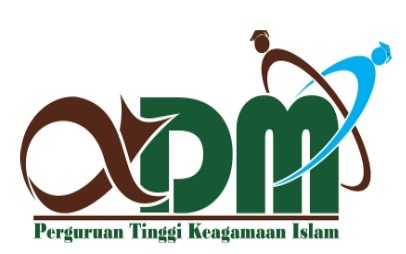Model Kontrol Pada Ekosistem Perkebunan Teh
DOI:
https://doi.org/10.21580/square.2024.6.2.23274Abstract
Tea plants are one of the commodities in Indonesia. In their development, the plantation ecosystem is heavily influenced by several factors, both internal and external factors. In the field of applied mathematics, mathematical modelling can be used to analyze the development of tea plant growth and their interaction each othe in their ecosystem. The mathematical model in this research is combining three main models, there are logistic model, epidemiological model, and predator prey model by adding fungicide and insecticide controls. Furthermore, local stability analysis is carried out and the optimal control problem is solved by Pontryagin maximum principle. The results of the analysis obtained five equilibrium points. Local stability analysis was carried out using the Routh Hurwitz criteria which showed the fifth equilibrium point is locally asymptotically stable. The basic reproduction number in the model is 0,99. Because it can be concludeed that there is no spread of disease in the tea plantation ecosystem after a period of 5 years. The control provided can reduce pest and disease attacks. After being given control, the population of infected tea plants decreased by 93,21%, Empoasca pests decreased by 99,47%, and leaf roller caterpillars decreased by 99,31% compared to the model that was not given control.
Keywords: Tea Plantation, Dynamical Model, Fungicide, Insecticide, Optimal Control.
Downloads
References
Aldila, D., Ndii, M. Z., and Samiadji, B. M. (2020). Optimal control on Covid-19 eradication program in Indonesia under teh effect of community awareness, Matehmatical Biosciences and Engineering, Research Article MBE, 17(6): 6355-6389.
Bai, D., Zhang, X. (2022). Dynamics of a Predator–Prey Model with the Additive Predation in Prey. Mathematics, 10, 655.
Becker, O. and Wildburger, U. L. (2020). Optimal dynamic control of predator-prey models, Central European Journal of Operations Research, 28, 425- 440.
Bessonov, N., Bocharov, G., Touaoula, T.M., Trofimchuk, S., Volpert, V. (2019). Delay reaction– diffusion equation for infection dynamics. Discrete Contin. Dyn. Syst., Ser. B 24(5), 2073–2091.
Bezabih, A. F., Edessa, G. K., and Rao, K. P. (2021). Ecoepidemiological model and analysis of prey-predator system, Journal of Applied Mathematics, Article ID 6679686, 17 pages.
Castillo-Chavez, C., & Song, B. (2004). Dynamical models of tuberculosis and their applications, Mathematical Biosciences and Engineering, MBE, 1(2), 361–404.
Chasnov, J. R. (2016). Matehmatical biology, Lecture notes for MATH 4333, 1-14.
Das, N., and Bhattacharya, R. (2020). Eigen value analysis in lower bounding uncertainty of kalman filter estimated, Conference Paper Archive, IFAC PaperOnline 53-2 5022-5027.
Djilali, S and Ghanbar, B. (2021). Dynamical behavior of two predators–one prey model with generalized functional response and time-fractional derivative. Advances in Difference Equations Advances in Difference Equations (2021) 2021:235.
Eskenduri, R.D. (2020). Budidaya jaringan tanaman teh di Indonesia, Bioma : Jurnal Biologi Makassar, Vol. 5(2) : 121-130. ISSN : 2528-7168 (printed) ; 2548-6659 (online).
Hao, P., Wei, J. and Fan, D. (2012). Analysis of dynamic in an eco-epidemiological model with stage structure, Advances in Difference Equations.
Kant, S. and Kumar, V. (2017). Stability Analysis of Predator-Prey System With Migrating Prey and Disease Infection in Both Species, Applied Mathematical Modelling, 42, 509-539.
Kuniya, T., Touaoula, T.M. (2020). Global stability for a class of functional differential equations with distributed delay and non-monotone bistable nonlinearity. Math. Biosci. Eng. 17(6), 7332–7352.
Li, J., (2016). An algebraic approach to proving the global stability of a class of epidemic models. Nonlinear Analysis: Real World Applications. 13(5).
Mansur, Ansar, A., dan Fardinah. (2020). Analisis model predator prey dengan adanya penyakit pada prey dan pemanenan pada predator, Journal of Mathematics: Theory and Applications, Vol. 2, No. 2, P-ISSN 2685-9653 e ISSN 2722-2705.
Meng, X.; Li, J. (2020). Dynamical Behavior of a Delayed Prey-Predator-Scavenger System with Fear Effect and Linear Harvesting. Int. J. Biomath, 14, 2150024.
Naji R. K. and Hussien, R. M. (2016). The Dynamics of Epidemic Model with Two Types of Infectious Diseases and Vertical Transmission, Journal of Applied Mathematics, 2016.
Naji, R. K., and Majeed, S. J. (2020). The Dynamical Analysis of a Delayed prey-Predator Model with a Refuge-Stage Structure Prey Population. Iranian Journal of Mathematical Sciences and Informatics Vol. 15, No. 1, pp 135-159.
Pal, A.K., Bhattacharyya, A., and Mondal, A. (2022). Qualitative analysis and control of predator switching on an eco-epidemiological model with prey refuge and hasvesting. Science Direct. Results In Control and Optimization 7 100099.
Selvam, A. G. M., Janagaraj, R and Jacintha, M. (2020). Dynamical analysis of a discrete fractional order prey-predator system incorporating a prey refuge with Holling type II response. Journal of Physics: Conference Series 1597 (2020) 012008.
Shabbir, M. S., Din, Q., Muhammad Safeer, M., Khan, M. A., and Ahmad, K. A. (2019). A Dynamically Consistent Nonstandart Finite Difference Scheme for A Predator-Prey Model. Advance in Difference Equations. 381.
Strzelecka, A., Kujawska, K. A., and Zawadzka, D. (2020). Application of logistic regression models to assess household financial decisions regarding debt, 24th International Conference on Knowledge-Based and Intelligent Information & Engineering System, Procedia Computer Science 176, 3418-3427.
Syamsir. (2020). Analisis Kestabilan dan Kontrol Optimal Model Matematika Dinamik Perceraian, Tesis Program Studi Magister, Fakultas Matematika dan Ilmu Pengetahuan Alam Universitas Hasanuddin Makassar.
Downloads
Published
Issue
Section
License
The Authors submitting a manuscript do so on the understanding that if accepted for publication, copyright of the article shall be assigned to Square: Journal of Mathematics and Mathematics Education as the publisher of the journal. The copyright form should be signed originally and send to the Editorial Office in the form of original mail, scanned document to [email protected]
Square : Journal of Mathematics and Mathematics Education by Mathematics Department UIN Walisongo Semarang is licensed under a Creative Commons Attribution-ShareAlike 4.0 International License.

























